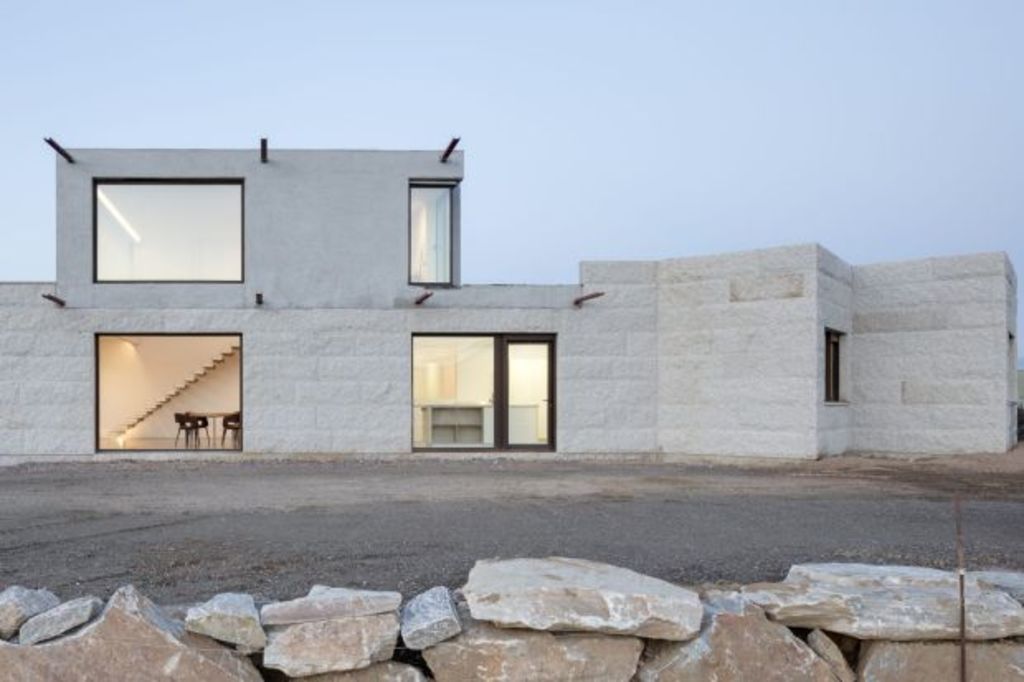Why more top architects around the world are using granite as their go-to

There’s a whiff of late ’80s, early ’90s hanging over granite. Far from the real thing, the style was to laminate benchtops in a glossy imitation.
Now architects are dusting off granite as it prepares for another turn in the fashion spotlight. And this time, there’s not a square metre of laminate in sight.
At the newly constructed VMS House in the Spanish town of Leon, stylish white granite covers the entire exterior. At first glance, it has an almost fortress-like appearance. The rock-solid walls and sharp boxy shapes give the impression of a modern-day castle. But this heavy presence is effectively softened by expansive windows.
Architect Marcos Miguélez says the granite cladding reinterprets the essence of traditional thick stone walls which solidly protect the domestic space. He says the huge slabs of pale granite not only create texture, but give a rustic aesthetic.
As more architects hark back to the art of stonemasonry, granite is gathering momentum as a popular construction material. Of all its qualities, this hard igneous rock is best known for its durability. It is highly resistant to wind and rain as well as the wear and tear of constant use, making it a logical choice for facades and floors.
Granite contains large grains of minerals, typically at least 20 per cent quartz. These minerals determine the colour and granite is predominantly pink, white and variations of grey and black.
Not far from VMS House, in the nearby town of Verin, architects used granite to clad the town’s art centre. Ten buildings make up the Centro das Artes de Verin and all are covered in grey granite sourced locally from the seaside province of Pontevedra. Architects also used granite for the floors of the centre to create a sense of continuity between the individual buildings.
The slabs used on the exterior are irregular and appear haphazard. Yet each building has a unique facade with the patterned use of slabs bearing horizontal or vertical lines.
- Related: The unexpected material making Australia’s best houses
- Related: Makeover saves Launceston substation from ruin
- Related: The Sydney home inspired by a floral blouse
Spain isn’t the only country to seize on the granite trend.
In China, architects plan to build a granite clubhouse and spa complex for exclusive lakeside villas in the mountainous district of Gaoyao.
In Switzerland, the MeCri Museum at the foot of the Swiss Alps has been extended with a granite and concrete gallery. And in Italy, Australian architects Denton Corker Marshall chose black granite to clad Australia’s pavilion for the Venice Biennale.
Melbourne architect Chris Stanley sees beauty in granite. Stanley, the director of Splinter Society Architecture, says it’s a material that has the twin advantages of unique character and incredible strength.
“The reason we use granite a lot is it’s very robust, it’s impermeable,” he says. “People love stone and they have forever, but a lot of clients get nervous about marbles and their softness and porosity, and the protection they need to give marbles and quartzites. Granite is as bullet-proof as you can get.
“You travel to any city in the world with a history and the granite walls and the floors have been around for over 1000 years. They are still there showing the passage of time.
“It’s one of those materials that gets better over time as it develops patina and shows wear.” Stanley has designed a partial granite facade at The Auburn, a three-level boutique apartment development in the leafy outer-eastern suburb of Hawthorn.
Pillars of unpolished granite will punctuate the exterior, while a 10-metre-high stone in the lobby will be a feature. The stone, which ranges in thicknesses of between 50 millimetres and 200 millimetres, will be extracted from a quarry in China.
We recommend
We thought you might like
States
Capital Cities
Capital Cities - Rentals
Popular Areas
Allhomes
More







